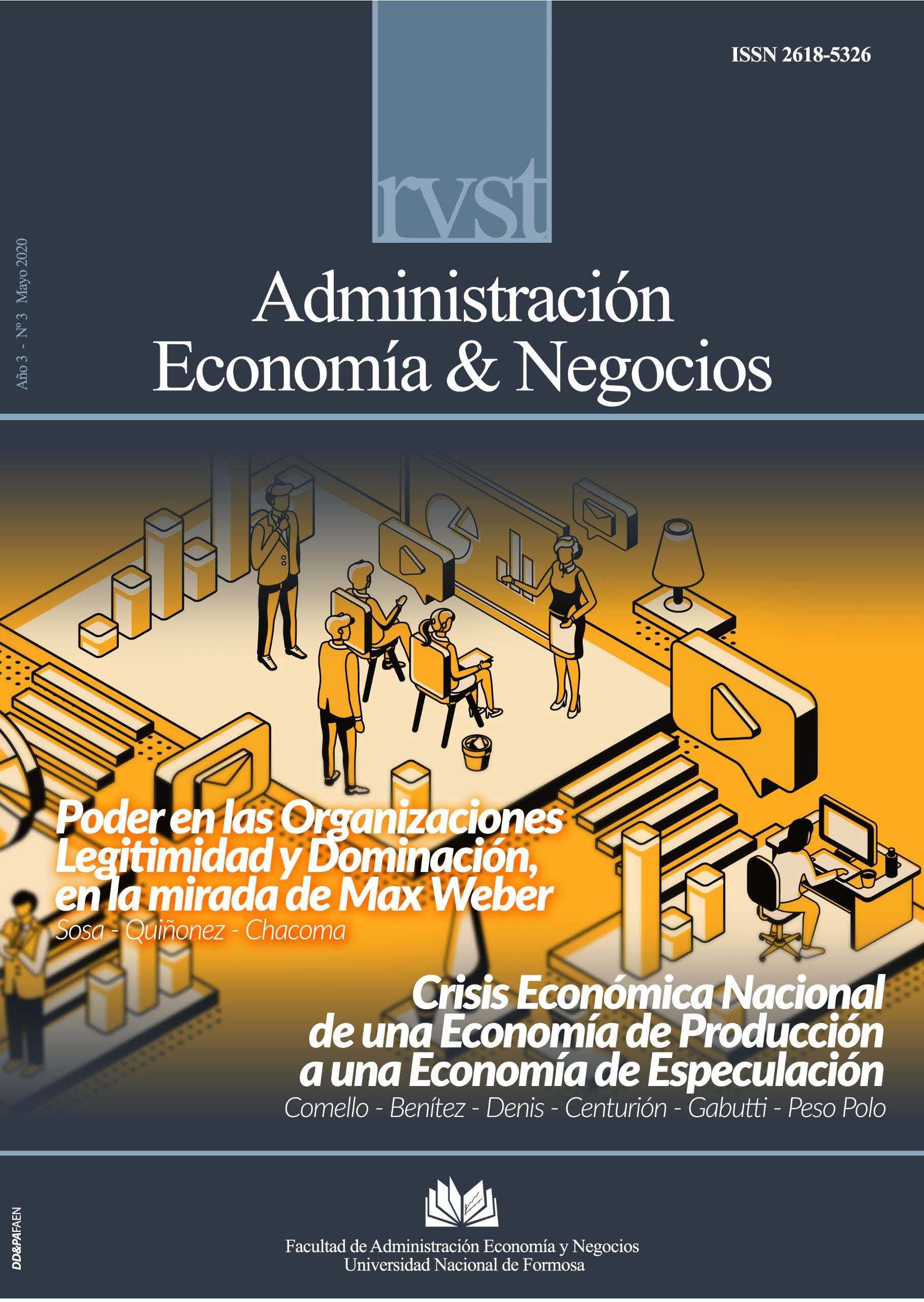Ver ítem
- xmlui.general.dspace_homeCentros Regionales y EEAsCentro Regional Santa FeEEA ReconquistaArtículos científicosxmlui.ArtifactBrowser.ItemViewer.trail
- Inicio
- Centros Regionales y EEAs
- Centro Regional Santa Fe
- EEA Reconquista
- Artículos científicos
- Ver ítem
El Manómetro del riesgo, de los sistemas “Don´t Worry” a los sistemas “Dios te ayude”
Resumen
El propósito de este trabajo fue diseñar indicadores que nos permitan medir el riesgo en los sistemas agropecuarios de un modo simple pero potente. Medimos el riesgo o la probabilidad de obtener ingresos por debajo de un umbral que consideramos crítico. Para ello trabajamos con los costos en condiciones de certeza y distribuciones probabilísticas de precios y rendimientos. Propusimos dos
indicadores: el primero (llamado índice de desastre) mide la
[ver mas...]
El propósito de este trabajo fue diseñar indicadores que nos permitan medir el riesgo en los sistemas agropecuarios de un modo simple pero potente. Medimos el riesgo o la probabilidad de obtener ingresos por debajo de un umbral que consideramos crítico. Para ello trabajamos con los costos en condiciones de certeza y distribuciones probabilísticas de precios y rendimientos. Propusimos dos
indicadores: el primero (llamado índice de desastre) mide la cantidad de veces que el ingreso cae debajo del umbral crítico; el segundo (llamado índice de intensidad del desastre), cuantifica la magnitud de la caída. Con ambos indicadores construimos una matriz con rangos que definen una tipología de riesgo desde los menos vulnerables a los más complicados. Adicionalmente, medimos el riesgo desde cinco niveles críticos o ingresos para garantizar la cobertura de: el consumo de la familia, el pago del trabajo familiar, la depreciación de las mejoras y los activos fijos, la retribución a los capitales invertidos y una renta fundiaria. Los resultados obtenidos muestran la pertinencia de la metodología y alienta a futuros trabajos de aplicación de la misma.
[Cerrar]
The aim of this work was to design indicators to measure risk in agricultural systems in a simple but
powerful way. The risk risk or the probability of obtaining an income below a critical threshold was
measured. The costs under certainty conditions were considered as well as the probabilistic distributions of prices and yields. Two indicators were proposed: the first one (called “disaster index”) measured the number of times that income falls below
[ver mas...]
The aim of this work was to design indicators to measure risk in agricultural systems in a simple but
powerful way. The risk risk or the probability of obtaining an income below a critical threshold was
measured. The costs under certainty conditions were considered as well as the probabilistic distributions of prices and yields. Two indicators were proposed: the first one (called “disaster index”) measured the number of times that income falls below the critical threshold; the second one (called “disaster intensity index”), quantified the magnitude of the fall. Both indicators were used to designed a risk typology matrix to characterize the different situations, from the least vulnerable to the most complicated. Additionally, it was measured the risk from five critical levels or incomes to ensure coverage of: the consumption of the family, the payment of family labor, the depreciation of improvements and fixed assets, the remuneration to the capital invested and a land rent. Results obtained show the relevance of the proposed methodology and encourages future work on its application.
[Cerrar]

Autor
Lacelli, Gabriel Angel;
Urcola, Hernan Alejandro;
Cabrini, Silvina María;
Fillat, Francisco Antonio;
Ghida Daza, Carlos Alberto;
Alvarez, Ruben Manuel;
Martin, Guillermo Daniel;
Sabadzija, Gabriela Noemi;
Piccolo, Maria Alejandra;
Bravo, Gonzalo Carlos;
Iurman, Daniel Eduardo;
Engler, Patricia Laura;
Pellerano, Liliana Laura;
Quirolo, Maria Eugenia;
Acosta, Fabian Arturo;
Teran, Juan Cruz;
Calvi, Mariana;
Fuente
Revista AE&N 3 (3) : 1-26 (mayo 2020)
Fecha
2020-05
Editorial
Facultad de Administración, Economía y Negocios, Universidad Nacional de Formosa
ISSN
2618-5326
Formato
pdf
Tipo de documento
artículo
Palabras Claves
Derechos de acceso
Abierto
 Excepto donde se diga explicitamente, este item se publica bajo la siguiente descripción: Creative Commons Attribution-NonCommercial-ShareAlike 2.5 Unported (CC BY-NC-SA 2.5)
Excepto donde se diga explicitamente, este item se publica bajo la siguiente descripción: Creative Commons Attribution-NonCommercial-ShareAlike 2.5 Unported (CC BY-NC-SA 2.5)


